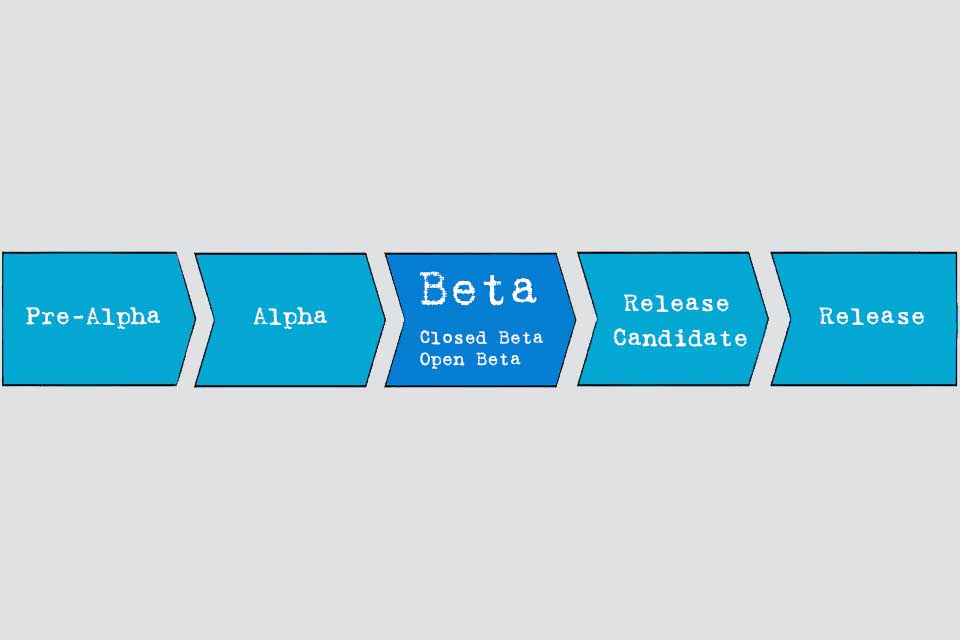What is a Soft Launch?
Soft launch – minimising the risks of a full-scale product launch
A new product is in the starting blocks, expectations are high – but the launch is followed by disillusionment: technical glitches, overloaded servers, negative user reactions. Such false starts are not uncommon and can slow down or permanently damage even strong ideas. However, many of these problems can be avoided – with a soft launch that offers space for testing, optimisation and real user feedback before things get serious. [1]
Pitfalls of traditional product launches
The moment a new product is launched is often accompanied by great excitement and high expectations – both internally within the company and on the customer side. Weeks or months of intensive development, marketing campaigns and strategic planning culminate in a single day: the launch. But it is precisely here that numerous pitfalls lurk.
Often, it is only when it goes live that the real weaknesses become apparent. Servers are overloaded, users encounter bugs, functions behave differently than planned or the offering simply does not meet the needs of the target group. All of this can quickly shake the confidence of potential customers and turn what should have been a strong start into a laborious recovery. In the digital world, negative reviews and reports spread like wildfire – and it’s difficult to recover from a false start.
These challenges affect not only young start-ups but also established companies. No matter how well a product works in theory or in internal testing, the real market is unpredictable. Taking to the big stage directly without a buffer and a learning phase is a high-risk strategy. And this is precisely where soft launch offers a strategic way out.
Soft launch – start small, scale smartly
Instead of betting everything on a single launch date, soft launch offers a strategic alternative: a targeted, scaled-back launch with selected user groups, limited reach or in specific regions. The goal is not to reach as many people as possible right away, but to gain initial experience – under real-world conditions.
This controlled launch allows technical weaknesses, UX problems or unexpected user needs to be identified at an early stage. Companies can optimise, correct mistakes and improve the user experience in a targeted manner based on real data before the product is launched across the board. Marketing strategies can also be tested and adapted on a small scale before large budgets come into play.
A soft launch is therefore not a sign of insecurity, but of strategic foresight. Those who use it wisely not only have the opportunity to make improvements, but in the best case even gain their first loyal users, who will later act as advocates.
Opportunities and challenges
At first glance, a soft launch sounds like a way to hedge against the risk of failure – and that’s what it is. But to view it merely as a ‘test phase’ is to underestimate its strategic reach. In reality, this type of gradual market entry is much more than that: it’s a tool that allows you to operate on the open heart of the product while it’s already beating – with all the opportunities and complications that entails.
Advantages of a soft launch:
- A limited product launch not only allows you to collect feedback, but also to test specific hypotheses in the real market before committing larger resources.
- Instead of being guided by internal assumptions, teams can use real user data to validate which product features are actually relevant – or should be dropped.
- Early user groups often develop a special feeling for the product – their feedback is not just data points, but valuable moments of connection.
- This launch strategy forces teams to think iteratively: instead of a one-time ‘go live,’ a continuous optimisation process is created that promotes innovation in the long term.
- This controlled launch allows companies to learn how to prepare not only their product but also their own organisation for scaling – for example, in support, communication or deployment processes.
Disadvantages of a soft launch:
- A phased market launch does not forgive aimlessness – without clear goals, metrics and hypotheses, the test phase quickly turns into a nebulous long-term experiment without actionable insights.
- Early users experience the product in a transitional form, which can strongly influence their expectations – and thus also distort their later judgement at the official launch.
- The cultural impact of a phased rollout can be paralysing internally: if the team has the impression that they are ‘half in, half out’, it can undermine the product energy.
- Media impact and momentum are harder to build – especially in markets where visibility and buzz play a central role, a staggered launch can fizzle out.
- The soft product launch can also create a false sense of security: good numbers on a small scale cannot always be transferred to a larger target group – especially in niche markets.
A soft launch is therefore no guarantee against failure, but a tool that only reveals its value in the right hands. In the next chapter, we show how to use this tool precisely – with clear goals, focus and strategy.
Tips for a successful soft launch
A successful soft launch begins long before the actual launch: with the conscious formulation of clear learning objectives. If you simply ‘test it’ without knowing which hypotheses are to be examined, you will get a lot of data but little insight. You need precise questions, for example about the acceptance of certain functions, willingness to pay or user retention in the first few days.
The selection of the test group should not be left to chance either. Often, the easiest market is chosen – geographically close, linguistically compatible, logistically convenient. But a test is only really meaningful if the user structure corresponds to the later core market: in terms of behaviour, needs and maturity. The wrong test market can cause more confusion than it helps to clear up.
The attitude within the team is also important. The soft launch should not be treated as a semi-public dress rehearsal, but as a fully-fledged phase with specific responsibilities. This means that structures for the rapid evaluation and implementation of findings must be in place – from UX to product management to support.
External communication is just as important. The first people to test the product should not be left in the dark. Early adopters will accept imperfections if they are part of a transparent process. Making it clear to them that their feedback is valued and heard helps to build relationships rather than frustration.
And finally: the real lessons often don’t lie where you expect them to. The soft launch should not be used to confirm existing beliefs, but to actively encounter contradictions, surprises and blind spots. That is precisely where its value lies – provided you have the courage to listen.
Impulse to discuss
How do companies know when their product is ready for a comprehensive market launch?
- Soft opening: Often used in the hospitality or retail industries. A restaurant, café or store unofficially opens to a limited number of customers to test procedures and gather feedback.
- Beta test: Particularly common in the software and tech world. The product is functional but not yet final. Users actively participate in testing, bugs and potential improvements are collected.
- Pilot phase: Often used in larger companies or for innovations. A product or process is initially tested on a small scale – e.g. in a specific region, department or target group.
- Test market: Classic marketing concept: Launching a product in a clearly defined market to analyse demand, acceptance and impact.
- Early access: common in the gaming and SaaS industries. Users can access the product before the official release – in exchange for feedback, or sometimes for a fee.
- Silent launch: a product is introduced without much fanfare, often online. The aim is to observe how it develops organically – without pressure from expectations.
Here you can find additional information from our Smartpedia section:



